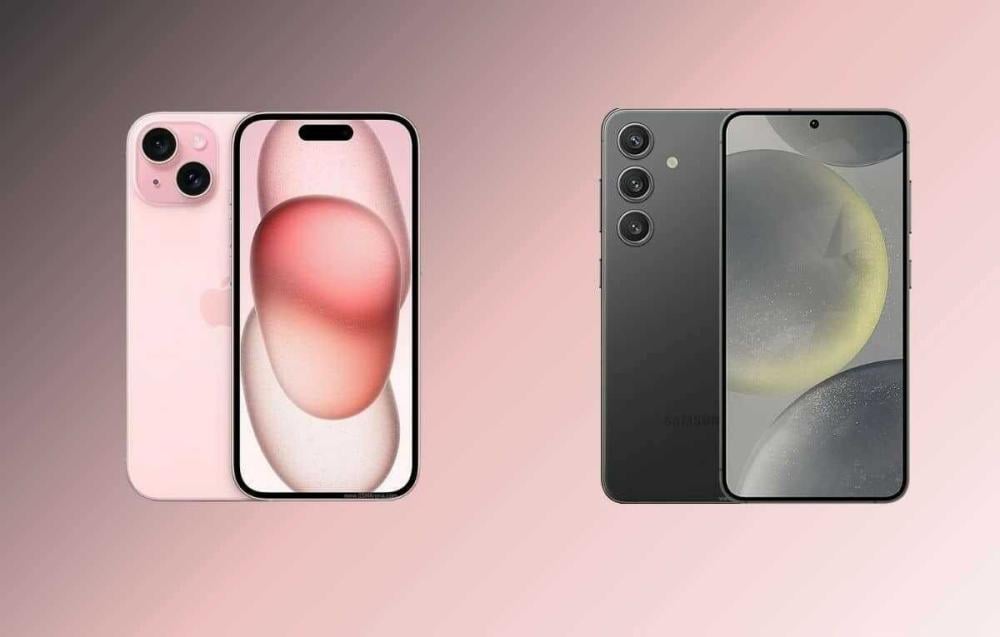Cameras have become one of the most important factors that determine our choices when buying smartphones, especially between the two giants, iPhone and Samsung. For many, the phone’s camera is the deciding factor in making the final decision. Whether you prefer to take family photos or shoot landscapes, the excellence of the camera can add a lot to your daily experience. But the question that comes to mind is: Which camera is better? Does the iPhone camera excel with its advanced technologies and attention to detail? Or does the Samsung camera with its modern technologies provide stronger performance? In this article, we will make a detailed comparison between the iPhone and Samsung cameras, focusing on the quality of images in natural and artificial lighting, in addition to the image processing technologies that each offers.
1- Camera performance in natural lighting conditions:
When it comes to shooting in natural light, both the iPhone and Samsung offer excellent performance, but in different directions. iPhones, especially the latest versions like the iPhone 14 Pro, tend to deliver sharper, more realistic photos, with more accurate details and more natural colors. This is due to Apple’s reliance on image enhancement technologies, such as Smart HDR, which ensures an excellent balance between shadows and highlights, adding dynamic contrast that makes photos look closer to what the human eye sees.
On the other hand, Samsung cameras, like the one on the Galaxy S23 Ultra, tend to produce photos with higher color saturation, making images appear more vibrant and “bright.” Samsung uses technologies like Scene Optimizer, which automatically analyzes the scene and adjusts colors and brightness to enhance the image. So, if you’re a fan of bright, colorful photos, you might find Samsung’s camera more appealing.
2- Camera performance in artificial lighting:
When it comes to shooting in artificial lighting, such as indoor or outdoor lighting, the difference between the two cameras becomes even more apparent. The iPhone camera excels at delivering more balanced images in terms of color and detail, with no noticeable blurring or loss of clarity even in low-light conditions. This feature is enhanced by Deep Fusion, which analyzes multiple frames and chooses the best ones to merge together, ensuring images with accurate details even in limited lighting.
While Samsung excels in natural light scenes, it can struggle when shooting in low-light conditions. There can be some noise in dark areas of the image, and despite the Night Mode feature, the iPhone seems to be better at providing balanced contrast between light and shadows.
3- Image processing techniques and their impact on quality:
One of the biggest differences between the iPhone and Samsung is how photos are processed after they are taken. The iPhone relies on AI-powered technologies like the Neural Engine, which helps analyze the scene and automatically improve image details, while maintaining realistic colors. As a result, you can notice that the photos look natural and free of excessive editing, making them ideal for those looking for photography that is close to reality.
In contrast, Samsung tends to auto-adjust its image processing, adding more saturation and sharpness, especially in areas with strong colors like blue skies or greenery. This approach may be preferable to some because it makes images look brighter and more exciting, but it may not be the best choice for those looking for fine, realistic details.
4- Lenses and viewing angle:
As for lenses, both the iPhone and Samsung offer a variety of options for shooting in a variety of conditions. The iPhone has a wide and ultra-wide lens, which are ideal for capturing wide views or landscape photography. However, Samsung adds some extra features like an optical zoom lens that lets you zoom in without losing quality.
The viewing angle on Samsung phones is often wider, giving you the ability to capture more scenes in one frame, while the iPhone focuses on fine details, which makes it excellent for shooting portraits and scenes with depth.
5- Video performance and shooting accuracy:
When it comes to video recording, the competition between iPhone and Samsung becomes even more intense. The iPhone, especially its recent releases like the iPhone 14 Pro, is a leader in video recording thanks to its support for 4K and HDR video recording. The iPhone is capable of capturing rich details in videos with extremely accurate colors, and is known for producing smooth videos even in fast-moving situations. Additionally, the iPhone offers Dolby Vision, a feature that adds incredible depth and contrast to videos, making it a favorite among content creators and professionals.
On the other hand, Samsung phones, especially the Galaxy S23 Ultra, take video resolution to new levels by offering 8K video recording. This feature gives users extremely fine details, allowing them to zoom in on the video without losing quality. However, not everyone may need this high resolution, as it requires a lot of storage space and may not be available for regular use by many users. But if you are looking for the highest levels of resolution and you are a professional in the field of photography, Samsung provides you with an unparalleled experience.
6- Optical and electronic image stabilization:
Optical and electronic image stabilization are two factors that determine the quality of your video when shooting in motion. iPhone features optical image stabilization (OIS) and electronic image stabilization (EIS) that work together to deliver stable, smooth videos even when you’re moving. This feature is especially useful when shooting scenes while walking or moving fast. iPhone also features Cinematic Mode, which adds a bokeh effect to your videos, making focus on people or objects look cinematic and stunning.
On the other hand, Samsung also offers an advanced stabilization system, but it is distinguished by the addition of the Super Steady feature, which relies on a combination of optical and electronic stabilization, ensuring video stability even in the most difficult shooting conditions. This feature makes Samsung ideal for shooting video on trips or sports activities where vibrations are more frequent.
7- Additional tools and techniques for video shooting:
Both phones offer additional features that help enhance the video shooting experience. The iPhone offers a slow motion mode that lets you shoot slow-motion video at up to 240 frames per second at 1080p, which is great for capturing small details that can’t be seen with the naked eye. It also lets you manually control exposure and focus while shooting, giving you complete control over the final results.
On the other hand, Samsung offers similar features with options like Super Slow Motion, which allows you to shoot videos at a very slow speed of up to 960 frames per second, a feature that gives you videos with unique and attractive scenes. Additionally, Samsung offers a wide range of color adjustment and effects options directly from the camera app, making it a powerful tool for creators who like to edit their videos on the fly.
Conclusion:
Ultimately, the choice between the iPhone and Samsung cameras largely comes down to your personal needs and preferences. If you care about high-resolution video recording, accurate colors, and a smooth shooting experience even in motion, the iPhone might be the better choice for you. If you’re looking for 8K video recording and want to take advantage of advanced features like Super Steady, the Samsung might be the perfect choice. Whether you prefer the natural, true-to-life colors that the iPhone offers or the saturated, vibrant colors that Samsung is known for, both phones offer a distinct and integrated experience.
Each of them has tremendous technical power in photography, and the final choice remains up to you and your specific usage and needs.

